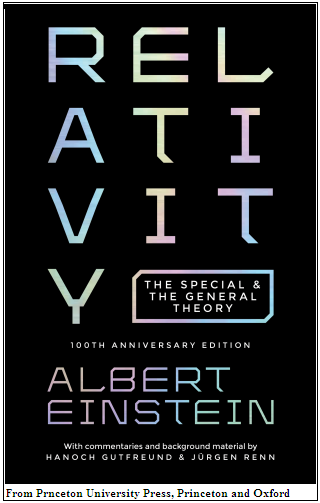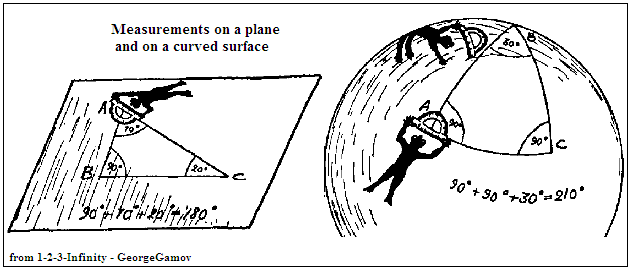The Master’s popular description, written in 1917, is still the best for the layperson, says S.Ananthanarayanan.
Close on the heels of detecting gravity waves, in 2014, comes the picture that has been taken of the Black Hole, in 2019. Both are dramatic realization of what Einstein’s General Theory of Relativity predicted. The two events fall on either side of 2015, the centenary year of the publication of the theory, marking a century of debate, discussion and marvel at this epochal insight into the nature of things.
The first part of the theory, the Special Theory, published in 1905, deals with differences in the way the world looks at high velocities, and the equivalence of mass and energy. The discoveries, with effects at the scale of the atom, were revolutionary and led to quantum mechanics, the transistor, the laser, atomic power and most of the physics of the 20th Century. The second part, the General Theory, looks at gravitation and effects at the scale of the cosmos, things that are not seen in everyday life. But the General Theory, which has been verified with breathtaking accuracy, is an undeniable part of nature and has to guide the quest to understand her laws.
Sensitive to both the importance and the specialized nature of the discoveries, Einstein himself resolved to put out a clear and simple, but rigorous exposition of the Theories for the benefit of readers who were not professional scientists. The result was his ‘booklet’, as he called it, ‘Relativity: The Special and the General Theory (A popular account)’ published in German in the spring of 1917. And in the spirit of the centenary, the Princeton University Press, with the Hebrew University of Jerusalem, has brought out a paperback reprint of the 1960 translation, including the appendices that were later added, and a ‘Reading Companion’ of commentaries, notes on other translations and memorabilia.

The book itself is just 132 pages, spread over 32 chapters. Does that sound like many chapters? Yes, Einstein splits his Relativity primer into bite-sized portions, one of the chapters, in fact, is just one page long. And with simplicity and clarity, he introduces just the essentials to grasp the line of thinking, with the least use of mathematics. “To those readers,” as he says in the preface, “who, from a general scientific and philosophical point of view, are interested in the theory, but who are not conversant with the mathematical apparatus of theoretical physics.”
Einstein first introduces the traditional idea that if observation platforms are moving at a uniform speed with respect to each other, speeds in one platform could be translated to speeds in the other platform by adding or subtracting the relative speed of the platforms. No observer can hence tell that she is on a platform that is ‘at rest’ or moving uniformly, because the laws of physics are the same for any pair of observers in uniform relative motion. And this invariance, Einstein puts down as the Principle of Relativity.
Except that in the case of light, the speed (in vacuum) is always 3, 00,000 km a second, regardless of the speed of the emitter or the receiver, which contradicts the Principle. As the constancy of the speed of light had been derived based on the principles of electromagnetism, by H A Lorentz, there seemed to be a case to let go the Principle, although there was no evidence to the contrary.
This is when the Special Theory of Relativity enters, to use the work of Lorentz to reinterpret the nature of space and time, which resolves the apparent contradiction – the speed light stays the same in both the platforms in relative motion, but lengths and time intervals contract when measured in moving frames of reference.
And another consequence of this reinterpretation is that energy of motion of a particle depends not just on its rest mass and speed, but on the mass and a factor that grows with the speed. As this factor is the square of the speed, divided by the square of the speed of light, the increase in the mass is negligible except at very high speeds. This expression for the energy, however, gives a relationship for the intrinsic energy of a particle at rest, the well known E=mc2 formula.
The General Theory
p ALIGN="justify">While these are the considerations of platforms moving at uniform relative speeds, Einstein now considers a case where one platform is accelerated, or the relative speed continuously changes. An observer in the accelerated platform would experience a force, opposite to the direction of the acceleration and she would perceive all free objects to fall in this opposite direction, and the observer would have no way to distinguish the acceleration perceived from a force of gravity. Einstein goes on to show that there is, in fact, no difference and suggests extending the Principle of Relativity to the general case of accelerated or platforms in a gravitational fieldHere, the path of a ray of light, which is seen as straight in one platform, it turns out, would appear as curved, when seen in a platform that is accelerated, or, which is the same thing, in a gravitational field. Would this mean the Principle of Relativity does not hold in the general case? Einstein deals with this question by developing a new way of designating events, in terms of measures, like the distance and direction from a fixed point, and the time.
A usual way of locating a point on a plane surface is by taking its distance from a pair of perpendicular lines. The distance between two points shown like this can then be worked out. However, if the surface on which the two lines are drawn is not a plane, but say a sphere, like the earth, then the distance between a pair of points would not be the same on the sphere as on the plane. Using reasoning like this, and no mathematics, Einstein develops the idea of a curved space that corresponds to the presence of a gravitational field, and shows that the curved beam of light, in the gravitational field, is still moving at the same speed!

This line of thought then leads to a new system of dynamics that governs the cosmos, where there are very large masses and gravitational fields. This system is distinct from the Newtonian system that has been so impressive in describing the Solar System since the 17th Century. When the masses are ‘low’, that is, comparatively low, however, Einstein’s system reduces to the same Newtonian way.
Newton’s theory of gravity was hence an approximation, that worked so well only while measurements were not accurate enough. The inverse square law, that Newton proposed is also an approximation and with Einstein’s General Theory of Relativity, need not be proposed to fit facts, but appears naturally, in the low mass limit.
Einstein describes other cosmological inconsistencies in traditional cosmology, which the General Theory resolves. A particular success he describes is calculating the period of precession of the orbit of Mercury. Under Newtonian mechanics, the orbits of the planets are ellipses and these ellipses are fixed. And so they were found to be, for all the planets except Mercury, the planet closest to the Sun. Here the elliptical orbit itself is found to turn around, exceedingly slowly, just 43 seconds, or the 3,600th parts of a degree, every century. Newtonian mechanics was powerless to explain this. But Einstein, with the publication of the General Theory, showed that the orbits of all planets would turn around, and for Mercury, he calculated the speed, exactly 43 seconds a century!
------------------------------------------------------------------------------------------ Do respond to : response@simplescience.in-------------------------------------------